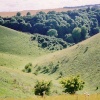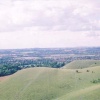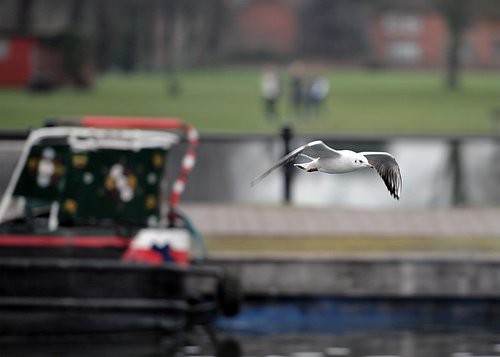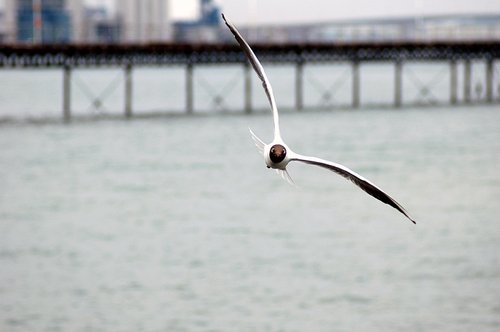Please login or click here to join.
Forgot Password? Click Here to reset pasword
 |  |  |  |  |  |
| Edward Lever Posts: 734 Joined: 22nd Dec 2005 Location: UK | quotePosted at 23:20 on 30th April 2014 Manual focussing is far too slow to focus on a flying bird. If your camera supports predictive AF, then this is the best mode for moving objects. Autofocus is generally faster with a DSLR than on a bridge or compact camera, and will be even better with a wide aperture telephoto lens. Unfortunately such fancy lenses are horrendously expensive. Often this combination of camera and lens is unwieldy and serious bird photographers tend to use a tripod, or at the very least a monopod to steady the camera. It is worth trying with whatever camera you have, but the odds are improved with the big lenses.
|
| Vince Hawthorn Posts: 12758 Joined: 19th Apr 2010 Location: UK | quotePosted at 23:25 on 30th April 2014 I did have in mind also that any help would apply to low flying aircraft as well. For today I did catch a starling in flight with undercarrige retracted and the wings outstretched- but too soft a focus! |
| Paul Hilton Posts: 2605 Joined: 21st Nov 2004 Location: UK | quotePosted at 03:28 on 1st May 2014 On 30th April 2014 23:14, John Lawrence wrote:
No John, its Outdoor Photography magazine as in W H Smiths etc. Its worth the cost of the magazine to get the free book with it in the wrapper--Understanding RAW Photography by Andy Rouse. Edited by: Paul Hilton at:1st May 2014 03:30 |
| Paul Hilton Posts: 2605 Joined: 21st Nov 2004 Location: UK | quotePosted at 03:36 on 1st May 2014 Vince---it was a job getting this little chap flitting about, but got him in the end. Have a look at Roy Jackson's bird photos; some of the best on the site here I think. Picture by Paul Hilton |
| Paul Hilton Posts: 2605 Joined: 21st Nov 2004 Location: UK | quotePosted at 14:01 on 1st May 2014 A longer focal lenght does seem to help the camera's focusing system, here using a 200mm lens with a 1.4TC.  Picture by Paul Hilton
|
| Paul Hilton Posts: 2605 Joined: 21st Nov 2004 Location: UK | quotePosted at 14:20 on 1st May 2014 Once again, a longer focal lenght (here an effective 260mm on the Nikon D70) has helped the auto focus not to focus on the pier in the background.  Picture by Paul Hilton
|
| Edward Lever Posts: 734 Joined: 22nd Dec 2005 Location: UK | quotePosted at 14:32 on 1st May 2014 I am sure you are right, Paul. The longer focal length lenses give greater differentiation between the bird and the background, so provided that the bird is on one of the auto-focus points, the auto-focus should work better. |
| Vince Hawthorn Posts: 12758 Joined: 19th Apr 2010 Location: UK | quotePosted at 21:54 on 1st May 2014 Thanks everyone , I agree about Roy's bird photographs as I have seen many superb captures of his . My last attempt was using a 550D with a 55-250mm lens that is only kit lens standard, the focus does seem to take a while searching not helped by poor panning. I do think a lot of the answer id down to a lot more practice, I did notice that the examples Paul has put up except for the sparrow flying accross the pic have the birds basically flying towards the camera-perhaps this is a way to keep the bird in shot and the focus more time to lock on. Thanks chaps. |
| Dave John Posts: 22335 Joined: 27th Feb 2011 Location: England | quotePosted at 22:57 on 1st May 2014 If you get some decent shots John, you put them on show mate. Only the odd one or two don't like them. Personally I think they are a very beautiful and photogenic animal |
| Rod Burkey Posts: 554 Joined: 2nd Sep 2008 Location: UK | quotePosted at 01:11 on 2nd May 2014 Foxes viewed through the lavatory window! Did this affect your work flow John? I think we would like to see a sample! To be serious though, if you capture the cub or adult foxes, choose the one you like best and I bet it will be well worth seeing by us on POE.
|
| Please login to post to this thread... |